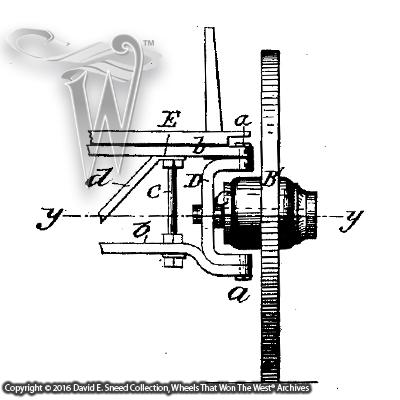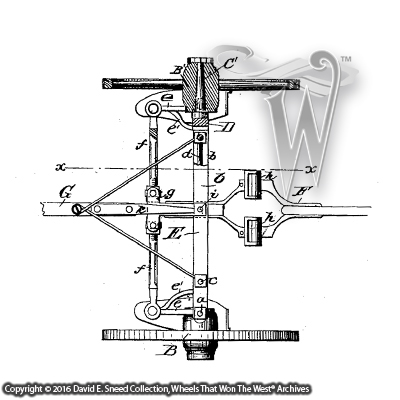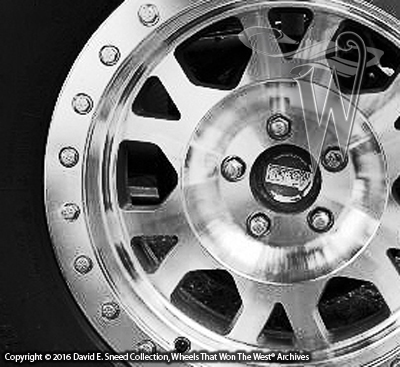The last thing most folks would believe about wood-wheeled wagons is just how much 'technology' is packed inside the vehicles. Nonetheless, these rolling works of art are loaded with innovative design distinctions. A few months ago, I was privileged to share details on a fair amount of technology built into America's early wagons. The rare details were included in a lengthy presentation I gave to members of the Carriage Association of America and the Colonial Williamsburg Foundation. Overall, it's an area of tremendous fascination to me because so much of this part of our history is regularly overlooked. Just because it goes unnoticed, though, doesn't mean it's a trivial pursuit. In fact, it's possible for some of these design elements to add important details to a vehicle's provenance. The individual features can also point to a timeframe of manufacture while simultaneously reinforcing identification and authentication efforts. Even so, gathering information on individual parts, processes, and patterns takes time and detailed record-keeping to keep the entire transportation story in perspective.
With that in mind, I recently read an article highlighting how much Henry Ford had done for the early auto industry. Clearly, Mr. Ford is due considerable credit. But, he didn't start from scratch. In fact, a number of design concepts in those period wheels came from other sources. For instance, where did the ideas originate for the steering systems? For running boards? Bodies? Tops? Suspensions? Spoke designs? Seats? Well, you get the picture. Early wagon makers had a tremendous influence on America's first automobiles. Truth be told, the influence hasn't stopped. Just as a point of reference, have you ever heard of beadlocks for truck tires? Simply put, they're used on many 21st century trucks to help secure the tires on wheels... especially for off-roading adventures. Believe it or not, the roots for the idea are grounded in early tire rivets found on western wagons. Just as beadlocks are purposed to help hold modern vehicle tires on their rims when the tire pressure changes, tire rivets on wooden wheels were also engineered to help hold wagon tires in place. That way, when the wooden rims (felloes) shrank, it was harder for the metal tire to slip off and leave the driver stranded. So, even though the look of the ride changes through time, the needs of transportation have a way of remaining similar. As a result, it's easy to draw countless parallels between modern wheels and 19th century designs.
Beyond tire rivets, in the paragraph above, I also made a reference to early steering systems installed in America's first autos. Believe it or not, some of those steering designs were extraordinarily similar to a wagon patent granted during the Civil War. That's right, the Civil War! At least 40 years before most autos were being seriously considered, some of the first tie rods and independent steering systems were being highlighted on wagons. To get a feel for how significant this idea was, it's important to realize that most all wagons and carriages at the time were steered by the entire axle turning on a center pivot. It was a method of construction that had endured for thousands of years.


The two illustrations above are part of a Civil War era patent featuring steering system elements similar to early auto designs.
In contrast to the traditional 'axle steer' system, this 1860s patent left the axle stationary and fixed; so, only the two front wheels turned. It meant that the wagon could be much more stable as it retained a wider, four-legged stance even in hard turns. The idea also helped keep the tongue from being thrown side to side when a front wheel hit an obstruction or hole. It was a concept that took a great deal of wear and tear off of the draft animals. Ultimately, there were several brands that used variations of this configuration in both the 19th and early 20th centuries.
Again and again, the makers of early wagons, stagecoaches, and western vehicles helped provide solid inspiration for the early auto industry. Even more amazing - from the demands of modern off-roading to the many present-day methods of marketing vehicles - the ideas and impact of America's first transportation industry are still being felt today!
Please Note: As with each of our blog writings, all imagery and text is copyrighted with All Rights Reserved. The material may not be broadcast, published, rewritten, or redistributed without prior written permission from David E. Sneed, Wheels That Won The West® Archives.
